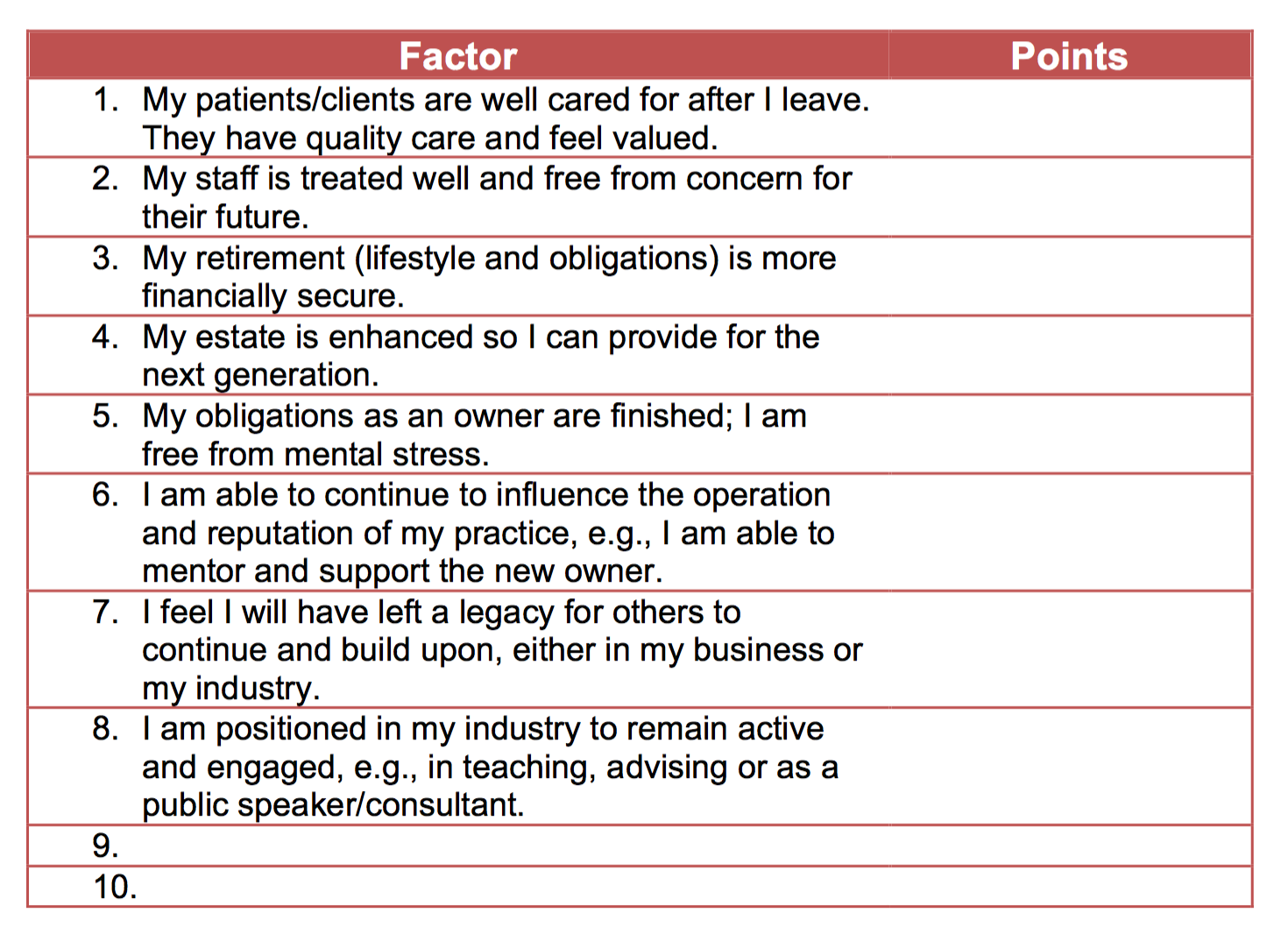The problem is all inside your head, she said to me,
The answer is easy if you take it logically
I’d like to help you in your struggle to be free
There must be fifty ways to leave your lover…
Just slip out the back, Jack
Make a new plan, Stan
You don’t need to be coy, Roy
Just get yourself free
Hop on the bus, Gus
You don’t need to discuss much
Just drop off the key, Lee
And get yourself free….”
Paul Simon, “Fifty Ways to Leave Your Lover”
Yes, Paul, the problem is inside our head—and our heart. How do you leave what you love? How do you let go and move on from something that has consumed you passionately and exhaustively for most of your waking hours over many years? Don’t let anyone tell you it’s a simple set of “slip out the back, Jack” tasks: clean up the books and records, pretty up the facility, get an appraisal, shop it around, and then “drop off the key, Lee.”
It’s a deeply personal and emotional process, and it’s an inescapable event.
For some it’s a forced change due to circumstances: economic downturns, disruptions in your industry like consolidations or new technology, or changes in personal health.
For many others, though, after you’ve made a long journey through a very satisfying career, you realize you’re ready to exit—even though you may not know what comes “after.”
Whether a voluntary or forced change, one big question is, to whom do you sell? What’s important to you about the buyer?
How do you sort through what’s important to you?
In listening to those who have faced this question, I sometimes heard a very clear answer—a certain return on investment (defined by price). But for others, it’s a cluttered set of criteria.
A small business owner of cancer care stores cared deeply about her regular, long-term customers. It was important that they would always feel they had a trusted relationship. She also wanted the stores to be affordable to those she had mentored to run the stores; she wanted to make sure it would continue after she left; she wanted to fund her retirement (she was only 60) and … there was a long list!
I met her on a golf course about a year after selling and asked how it went. With tears in her eyes, she said, “Great, got a good price. But I sold it to the wrong buyer.” In reflection, her most important goals weren’t met, and she regretted selling. So do almost 75% of business owners (at some point in the first year after selling) who leave without a thoughtful buyer strategy.
 To help owners get clear on how to leave what they love, I created a simple ranking exercise. I ask them to write down all the buyer criteria muddling their thinking and then assign 100 points across the items. I often suggest that life partners do the same exercise. Typically they are surprised by what they learn.
To help owners get clear on how to leave what they love, I created a simple ranking exercise. I ask them to write down all the buyer criteria muddling their thinking and then assign 100 points across the items. I often suggest that life partners do the same exercise. Typically they are surprised by what they learn.
For some, priorities become surprisingly clear. But are they the same as their significant other’s? Where are their assumptions about goals and values similar and different? In fact, there is much to discuss!
Take this Leaving What You Love Ranking Exercise
Here are some statements that are examples of the values and priorities you might have when you think about the 50 ways to leave what you love. Feel free to add your own criteria—anything that comes to mind as important to you. Once you have your list, allocate 100 points to the factors. Avoid an even distribution; make at least one factor 25%.
Downloadable Leaving What You Love Ranking Exercise
The time you take now to write out your priorities has three benefits.
- It reduces the stress and anxiety that comes from ongoing indecision and lack of clarity.
- It grounds you in what is important to you as you discuss the sales process with advisors.
- And it prepares you for that unexpected sales inquiry when you feel the excitement of the opportunity, the recognition of all you have accomplished, and perhaps the panic of suddenly “hopping off the bus, Gus.”
For more exercises like this one, I hope you will consider looking into Exit Signs: The Expressway to Selling Your Business with Pride and Profit. This book is both practical and strategic; it is about the tactics of selling and the transitions of leaving; and it focuses on three exit goals: leaving your business with pride, profit, and a legacy that you made a difference. Let it help you get your head, your heart and your company ready for an ownership transition.
What are the most important factors in leaving your business? Please post a comment to help others sort their priorities.


